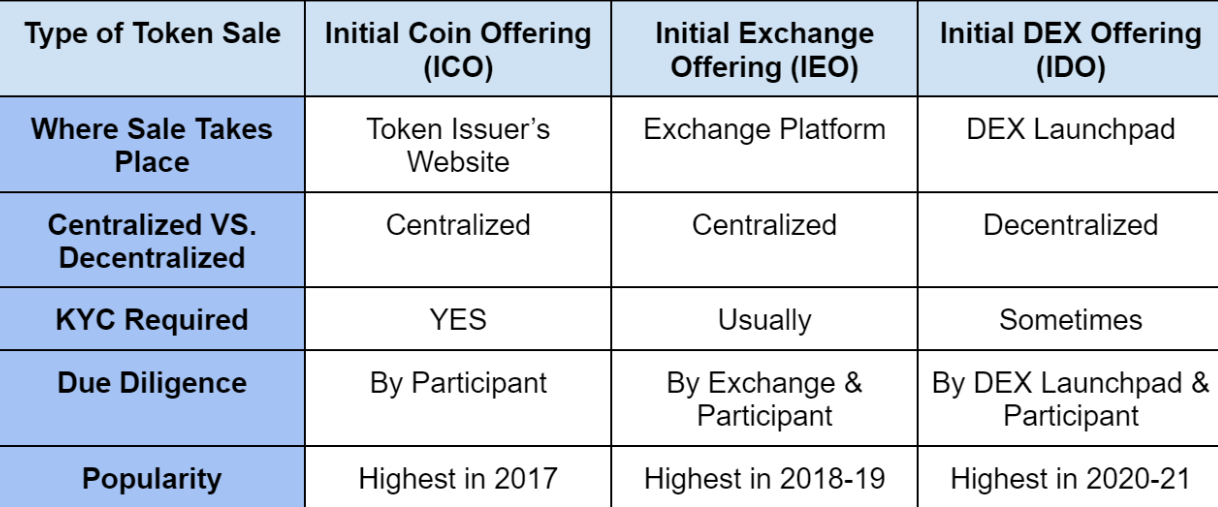Using a cutting-edge method of financing known as an Initial Decentralized Offering (IDO), cryptocurrency companies can introduce their native coin on unreliable exchanges (DEXs). IDO, a replacement for the notorious ICO, offers projects a risk-free means of funding their initial operations or future expansion.
This article will explain what IDO is and what its benefits are.
What Is IDO?
The Raven Protocol, the first-ever IDO, took place back in June 2019. The protocol’s developers decided to use the Binance DEX. Until the hard cap is met, trailers may purchase the token there at a set price. On most systems, this is how the initial IDOs happened.
Theoretically, this specific method of fundraising has several significant advantages, such as
- Quick trading,
- Instantaneous liquidity,
- Clear and honest fundraising.
Investors, though, weren’t happy. This was due to the fact that these token sales would practically sell out in a matter of seconds, giving the typical investor little chance to acquire a stake and participate. The idea that insiders and bots were snatching them up was created, and the market had to change to meet the rising demand.
IDO launchpad platforms were created as a result, and they were one of the most popular subjects in late 2020 and early 2021.
How Does IDO Work?
After understanding what an IDO is, we will explain how one works.
A decentralized exchange (DEX) is used by an IDO to hasten the token sale procedure. Owners of cryptocurrencies can submit their projects to the exchange, and the platform will complete token distribution and transfer. Digital contracts allow for the automation of these procedures, which take place on the decentralized ledger. When launching an ICO or crypto exchange, each DEX has its own rules.
However, there are established procedures, such as
- A project gets given the go-ahead to perform an IDO on a decentralized exchange following a vetting process. For a set price, they offer a certain amount of tokens. In return for these tokens, investors bolt their finances.
- An investor must accomplish promotion requirements before being added to the whitelist. A potential investor can also divulge merely their wallet address.
- A portion of the funds generated through this technique is used to create a liquidity pool. The team working on the project receives the balance. Investors can then convert their tokens into cash when the token-generating events are completed. The LP is typically fastened for a certain period of time.
Difference Between ICO, IEO, and IDO

Initial Decentralized Offering Benefits
Transparency
-
- Individual investors typically buy a big token at a discount while a token sale is underway. They may make a sizable profit by reselling the tokens to the general public.
Quick Trading
-
- IDO appears to have the added benefit that this might be transmitted immediately. This makes it possible for investors to purchase tokens as soon as they are created and then resell them in the IDO at a greater price later.
Liquidity
-
- The term liquidity describes the capacity to buy or sell anything quickly. The project’s token gains instant liquidity within an IDO, perhaps increasing the token’s price.
Takeaways
- IDO offers projects a risk-free means of funding their initial operations or future expansion.
- The Raven Protocol, the first-ever Initial DEX Offering, took place back in June 2019.
- A decentralized exchange (DEX) is used by an IDO to hasten the token sale procedure.